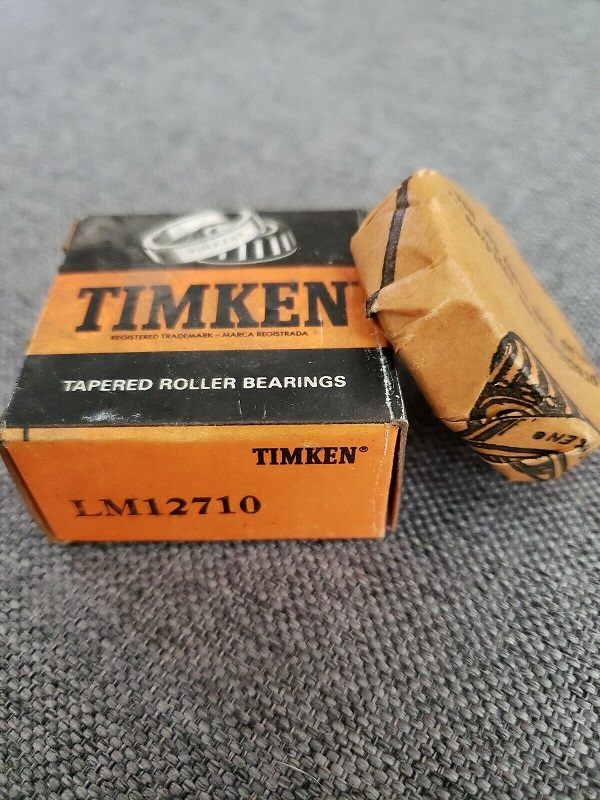Writer: Eric Bearing Limited
When transferring machine tool spindle bearings, it is generally necessary to preload the bearings on the spindle. The purpose is to improve the rotation accuracy of the bearing, increase the stiffness of the shaft, suppress the vibration and noise of the shaft, and prevent the sliding of the rolling elements. What are the preloading and preloading methods of the bearing, and how does the stiffness of the shaft change when the bearing is preloaded? Eric Bearing Limited made a detailed introduction based on the knowledge of bearing preloading.
1. What is bearing preload
Bearing pre-tightening refers to trying to apply a certain pressing force between the inner and outer rings when installing the bearing, so that the contact between the rolling elements and the inner and outer rings produces a certain initial deformation and is in a compressed state.
2. What are the pre-tightening methods of TIMKEN bearings
There are two main methods for TIMKEN bearing preload: positioning preload and constant pressure preload.
(1) Positioning preload
Positioning preload refers to the axial relative position of the combined bearing, which will not change during use. The various methods are as follows:
a. In order to apply preload, it is a method used after tightening the combined bearing with the width difference or the axial clearance adjusted in advance.
b. Use spacers or spacers with adjusted dimensions to preload the bearing.
c. The method of tightening the screw and nut that can adjust the axial clearance. In this case, in order to obtain an appropriate preload, it is necessary to measure the starting friction torque while adjusting. However, this method is difficult to control the preload, and the bearing may tilt, so it is not recommended for machine tool spindles that require high precision.
(2) Constant pressure preload
Constant pressure preloading is a method of applying proper preloading to the bearing through cylindrical springs and butterfly springs. Even if the relative position of the bearing changes during use, the preload can be kept basically constant. Usually used in high-speed rotating angular contact bearings pairing.
3. Changes in stiffness caused by bearing preload
(1) Positioning preload and axial stiffness
After the inner ring of TIMKEN composite bearing is axially tightened, bearing A and bearing B have displacements of δaoA and δaoB respectively, which eliminates the clearance δao between the inner rings. In this state, Fao is preloaded. Fa: external axial load, FaA: axial load borne by bearing A, FaB: axial load borne by bearing B, δa: position of the combined bearing, δaA: displacement of bearing A, δaB: of bearing B The amount of displacement. TIMKEN LM12749/LM12710 bearings online , pls click here :

(2) Constant pressure preload and axial stiffness
The stiffness of the preloaded spring is usually very small compared to the stiffness of the TIMKEN bearing, so the displacement line of the spring is approximately parallel to the horizontal axis. Therefore, the rigidity of the constant pressure preload is approximately equal to the rigidity of a single bearing to which the axial preload force Fao is applied in advance.
4. Summarize the changes in stiffness of TIMKEN bearings with different preload methods
Through the comparison of positioning preload and constant pressure preload. When the TIMKEN bearing preload is equal, the positioning preload is more effective to increase the rigidity of the bearing, that is, the displacement caused by the load during the positioning preload is smaller. However, positioning is expected that during operation, due to the difference in axial expansion due to the temperature difference between the shaft and the bearing seat, the difference in radial thermal expansion caused by the temperature difference between the inner and outer rings, and the influence of the centrifugal force acting on the rolling elements during rotation, pre-tightening The amount changes. In the case of constant pressure pretension, the change in spring load caused by the shaft expansion and contraction is very small, so the change in pretension can be ignored. Therefore, it is generally suitable to use positioning pre-tightening when increasing the rigidity, and to use constant-pressure pre-tightening when rotating at high speed.
Tel: 00852-30697500
Fax: 00852-30697511
Email: sales@ericbearing.com
Message: Click Here Message!